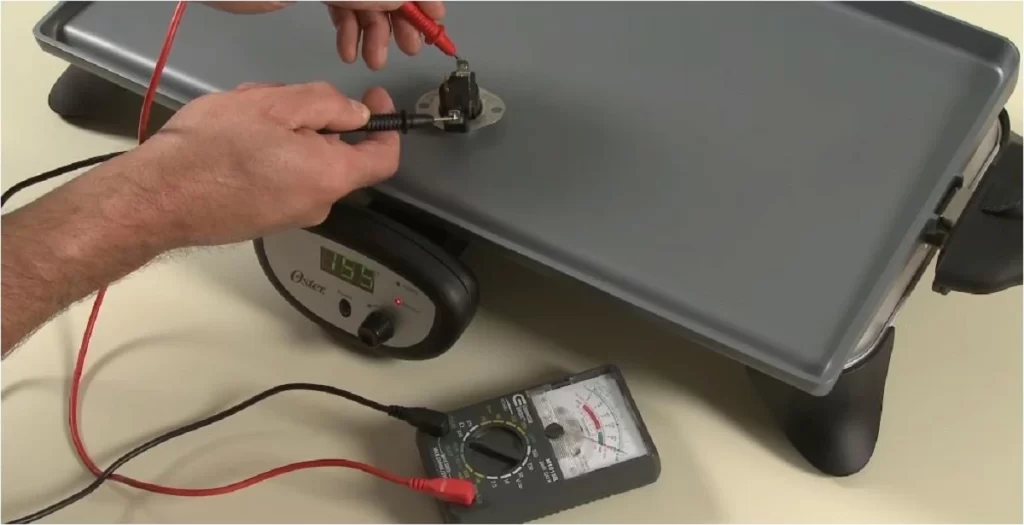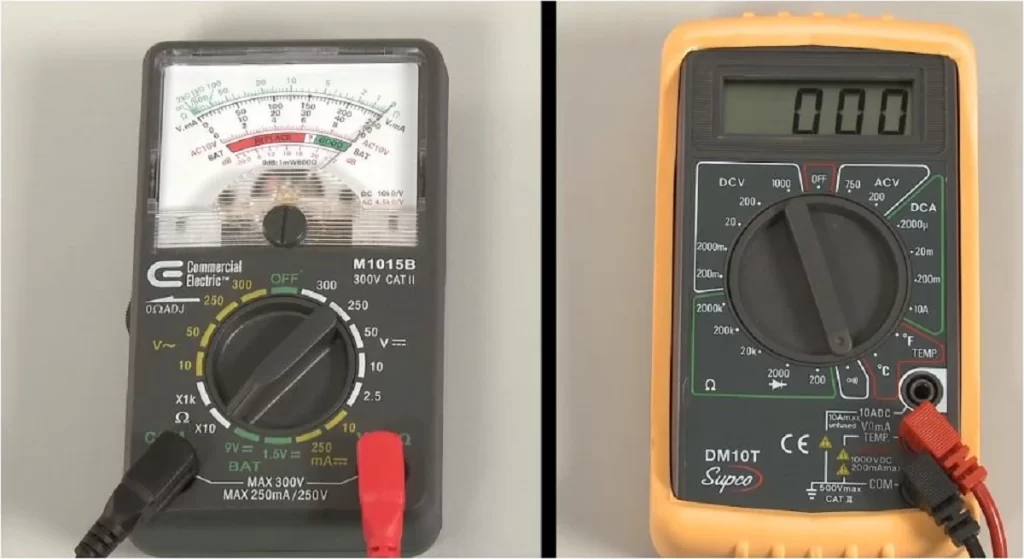| Note: This article may contain affiliate links, which means if you make a purchase following our links won’t cost you extra, but we may earn a commission. Learn more |
If your dryer is too hot, it could be a sign of a potential issue that needs to be addressed. One way to determine if your dryer is too hot is by checking if the back of the dryer feels excessively hot. While it is normal for the back of a dryer to get warm during operation, it should not become too hot to touch. If the outside of your dryer feels hot to the touch, it may indicate that the appliance is overheating.
To further assess if your dryer is too hot, you can also observe the condition of your clothes after drying. If your clothes come out excessively wrinkled or damaged, it could be a result of the dryer running at a higher temperature than recommended.
Similarly, if you notice that your dryer is hot to the touch even when it is not running, it could be a sign of a malfunctioning thermostat or heating element.
To measure the temperature of your dryer, you can use a digital thermometer. Place the thermometer inside the dryer drum and run a cycle on the high setting. The temperature should typically reach around 135 to 150 degrees Fahrenheit. If the temperature exceeds this range, it may indicate that your dryer is running too hot.
If you find that your dryer is running too hot, take action to prevent any potential safety hazards or damage to your clothes. Start by checking the lint filter and cleaning it if necessary, as a clogged filter can cause the dryer to overheat.
Ensure that the venting system is clear and free from any obstructions. If the issue persists, it is recommended to consult a professional technician to diagnose and repair any underlying problems with your dryer.
How Hot Does a Dryer Get on High?
Dryers typically reach temperatures between 135 to 150 degrees Fahrenheit on the high setting. This high temperature is necessary to effectively dry your clothes within a reasonable time frame.
The exact temperature can vary depending on the make and model of your dryer. Some dryers may have a higher maximum temperature, while others may have a lower one.
To ensure that your dryer is operating within a safe temperature range, it is recommended to use a digital thermometer to measure the temperature inside the dryer drum. Place the thermometer inside the drum and run a cycle on the high setting. If the temperature exceeds the recommended range, it may indicate that your dryer is running too hot.
If you find that your dryer consistently reaches excessively high temperatures, it could be a sign of a malfunctioning thermostat or heating element. In such cases, it is advisable to contact a professional technician to diagnose and repair the issue.
Operating a dryer that consistently runs at extremely high temperatures can pose a fire hazard and may also cause damage to your clothes.

Why Is My Dryer Getting Too Hot?
An overheating dryer can be a cause for concern, as it not only affects the performance of the appliance but also poses a potential fire hazard. Understanding the reasons behind a dryer getting too hot is crucial for addressing the issue. Several factors can contribute to this problem.
Clogged Ventilation System
One common cause of a dryer overheating is a clogged ventilation system. When lint, debris, or other obstructions accumulate in the dryer vent or exhaust duct, it restricts the airflow, causing the dryer to work harder and generate excessive heat. Regularly cleaning the vent and duct can help prevent this issue.
Malfunctioning Thermostat
Another possible culprit is a malfunctioning thermostat. The thermostat regulates the dryer’s temperature by turning the heating element on and off. If it fails to function correctly, it may not shut off the heating element, leading to overheating. In such cases, it’s advisable to consult a professional technician to diagnose and replace the faulty thermostat.
Restricted flow within the Dryer
Restricted airflow within the dryer itself can also contribute to overheating. This can occur if the lint filter is clogged or if the dryer’s internal components, such as the blower wheel or fan, are obstructed. Regularly cleaning the lint filter and ensuring the dryer’s interior is free from debris can help maintain proper airflow.
Overloading the Dryer
Overloading the dryer with too many clothes can impede proper airflow, causing the appliance to overheat. Follow the manufacturer’s guidelines regarding load capacity to prevent this issue. By properly distributing the clothes and avoiding overloading, you can ensure adequate airflow and prevent overheating.
Related: Dryer Hot to Touch When Not Running and Other Issues!
How to Tell If Your Dryer Is Overheating?
Detecting whether your dryer is overheating is crucial for preventing potential damage and ensuring the safety of your home. Here are some signs to look out for:
1. Excessive Heat
One obvious sign of an overheating dryer is excessive heat. If the exterior of the dryer feels unusually hot to the touch, it may indicate a problem. While dryers do generate heat during operation, it should not be to the extent that it becomes a safety concern.
2. Burning Smell
Another telltale sign is a burning smell emanating from the dryer. This odor can indicate that the appliance is overheating and potentially burning lint or other debris. If you notice a persistent burning smell, it’s essential to address the issue to prevent a fire hazard.
3. Clothes Taking Longer to Dry
If your clothes are taking longer than usual to dry, it could be a sign of an overheating dryer. When the appliance overheats, it may not be able to effectively remove moisture from the clothes, resulting in extended drying times. Monitor the drying cycle and take note of any significant changes.
4. Tripped Circuit Breaker
An overheating dryer can cause the circuit breaker to trip. If you find that the dryer consistently trips the circuit breaker during operation, it’s a clear indication of an underlying issue. This safety feature is designed to protect your home from electrical hazards, so it’s crucial to investigate the cause.
The Back of the Dryer is Too Hot to Touch
If the back of your dryer is too hot to touch, it may indicate that the appliance is overheating. While it is normal for the back of a dryer to get warm during operation, it should not become excessively hot. Overheating can be caused by various factors, including a clogged venting system, a malfunctioning thermostat, or a faulty heating element.
One of the primary reasons for the back of a dryer becoming too hot is a restricted or blocked venting system. When the venting system is clogged, it restricts the airflow, causing heat to build up inside the dryer. Regularly cleaning the lint filter and ensuring that the venting system is clear can help prevent overheating.
A malfunctioning thermostat can also cause the back of a dryer to become too hot. The thermostat is responsible for regulating the temperature inside the dryer. If it is faulty, it may not shut off the heating element at the appropriate temperature, leading to overheating. In such cases, it is advisable to have the thermostat replaced by a professional technician.
A faulty heating element can contribute to the back of a dryer becoming excessively hot. The heating element generates the heat needed to dry your clothes. If it is damaged or malfunctioning, it may produce excessive heat, resulting in overheating. A professional technician can inspect and replace the heating element if necessary.
If you find that the back of your dryer is consistently too hot to touch, address the issue to prevent any potential safety hazards. Regular maintenance, such as cleaning the lint filter and ensuring proper ventilation, can help prevent overheating.
If the problem persists, it is advisable to seek professional assistance to diagnose and resolve the underlying cause.

How to Measure Dryer Temperature?
Measuring the temperature inside your dryer can help you determine if it is running at an appropriate level or if it is overheating. To measure the dryer temperature, you will need a digital thermometer.
Start by placing the digital thermometer inside the dryer drum, ensuring that it is not in contact with any clothes or other items. Close the dryer door and select a high heat setting. Allow the dryer to run for a few minutes to stabilize the temperature.
Once the temperature stabilizes, check the reading on the digital thermometer. The temperature inside the dryer drum should typically reach around 135 to 150 degrees Fahrenheit on the high setting. This temperature range is considered normal for most dryers.
If the temperature exceeds the recommended range, it may indicate that your dryer is running too hot. This could be a sign of a malfunctioning thermostat or heating element. In such cases, it is advisable to consult a professional technician to diagnose and repair the issue.
Measuring the dryer temperature periodically can help ensure that your appliance is operating within a safe range.
It is important to note that the temperature can vary depending on the make and model of your dryer.
How to fix a dryer that’s getting too hot
1. Clean the Lint Filter and Venting System
Regularly cleaning the lint filter is crucial to prevent lint buildup, which can restrict airflow and cause the dryer to overheat. Remove the lint filter and clean it thoroughly, removing any lint or debris.
Ensure that the venting system is clear and free from any obstructions. A clogged venting system can lead to overheating, so it’s important to clean it periodically.
2. Check the Thermostat
A malfunctioning thermostat can cause the dryer to run at higher temperatures than necessary. To check the thermostat, you will need a multimeter. Disconnect the power supply to the dryer and locate the thermostat. Set the multimeter to the ohms setting and test the thermostat for continuity. If there is no continuity, it indicates a faulty thermostat that needs to be replaced.
3. Inspect the Heating Element
A faulty heating element can also cause the dryer to get too hot. Start by disconnecting the power supply and locating the heating element. Use a multimeter to test the heating element for continuity.
If there is no continuity, it means the heating element is defective and needs to be replaced. It’s important to follow the manufacturer’s instructions when replacing the heating element.
4. Check the Ventilation Ducts
Blocked or restricted ventilation ducts can lead to poor airflow and overheating. Inspect the ventilation ducts for any obstructions, such as lint buildup or debris. Use a vacuum or a brush to clean out any blockages.
Ensure that the ducts are properly connected and not kinked or damaged. Proper ventilation is essential for the dryer to operate efficiently and prevent overheating.
5. Verify the Cycling Thermostat
The cycling thermostat regulates the temperature inside the dryer. If it is faulty, it may not shut off the heating element at the appropriate temperature, causing the dryer to overheat. Disconnect the power supply and locate the cycling thermostat. Use a multimeter to test it for continuity. If there is no continuity, the cycling thermostat needs to be replaced to ensure proper temperature regulation.
6. Consult a Professional Technician
If you have tried the above steps and your dryer is still getting too hot, it is advisable to consult a professional technician. They have the expertise to diagnose and repair complex issues with your dryer.
Attempting to fix advanced problems without proper knowledge can be dangerous and may cause further damage.
A professional technician can accurately identify the underlying cause of the overheating issue and provide the necessary repairs or replacements.